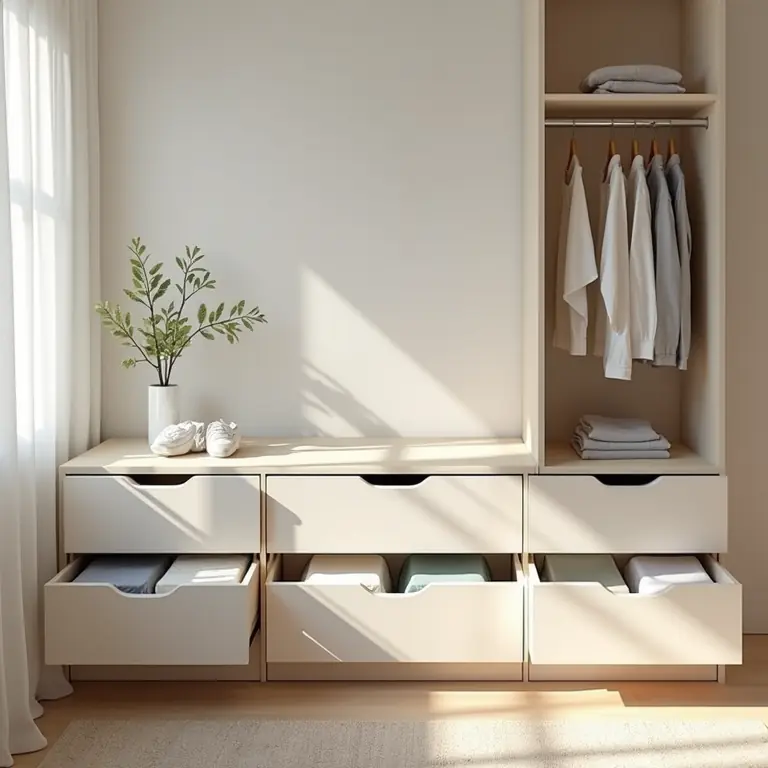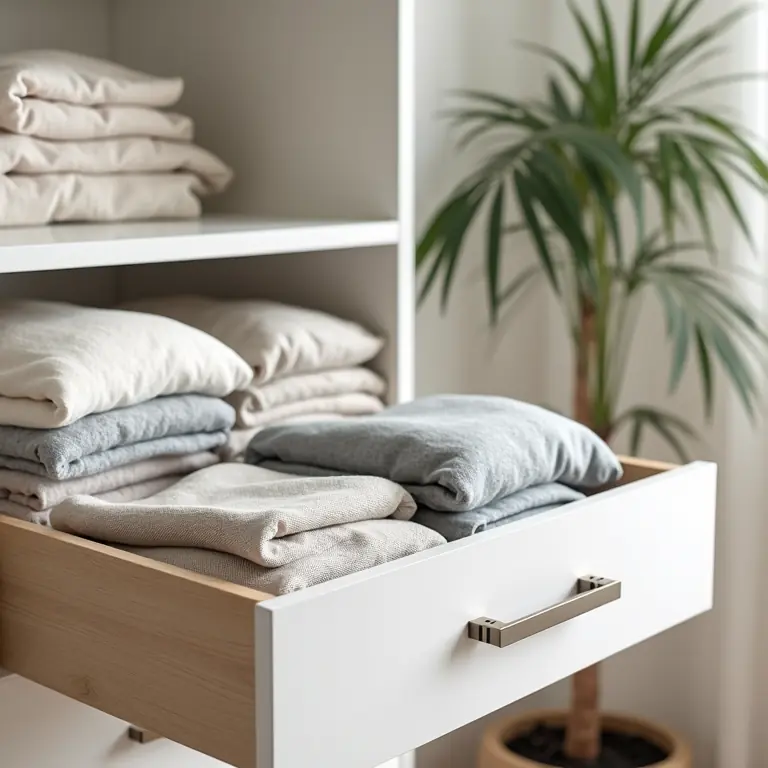Simplify Your Space: A Friendly Guide to KonMari Method Basics
Feeling overwhelmed by clutter? Does the thought of tidying up fill you with dread? You’re not alone! Many of us accumulate possessions over time, and before we know it, our homes feel less like sanctuaries and more like storage units. But there’s a method gaining popularity that promises not just a tidy home, but a more joyful and intentional life: the KonMari Method, developed by Marie Kondo. This guide will walk you through the basics, offering a friendly, step-by-step approach to decluttering and organizing your space.
What is the KonMari Method?
The KonMari Method isn’t just about getting rid of things; it’s a philosophy centered around surrounding yourself only with items that “spark joy.” Marie Kondo, a Japanese organizing consultant, developed this method based on the idea that a clutter-free home leads to a clutter-free mind, and ultimately, a happier life. It’s not about minimalism (although it can lead to a more minimal lifestyle), but about intentionality. You’re keeping what you truly love and appreciate, and letting go of what no longer serves you.
The Core Principles
- Commitment to Tidying Up: This isn’t a weekend project. The KonMari Method requires a dedicated period of time and a firm commitment to see it through.
- Imagine Your Ideal Lifestyle: Before you start, visualize how you want to live. What does your dream home look like? How do you want to *feel* in your space? This vision will guide your decisions.
- Finish Discarding First, Before Organizing: This is crucial. Don’t fall into the trap of buying organizing containers before you’ve actually gotten rid of items.
- Tidy by Category, Not by Location: This is perhaps the most unique aspect of the KonMari Method. Instead of tidying one room at a time, you tackle categories like clothes, books, papers, komono (miscellaneous items), and sentimental items.
- Respect Your Belongings: Kondo emphasizes treating your possessions with gratitude, even those you’re discarding.
The Six Basic Rules
While the philosophy is broad, the KonMari Method also has specific rules to follow. These rules help ensure a thorough and effective decluttering process.
- Discard Everything: Gather *all* items within a category from *everywhere* in your home. Pile them up in one place. This visually demonstrates the sheer volume of your possessions.
- Spark Joy Test: Pick up each item individually and ask yourself, “Does this spark joy?” If it does, keep it. If it doesn’t, thank it for its service and let it go. This isn’t about practical usefulness, it’s about emotional connection.
- Thank Items Before Discarding: This may sound strange, but Kondo believes it’s important to acknowledge the item’s role in your life before releasing it.
- Organize by Category: After discarding, organize the remaining items within each category.
- Vertical Folding: Kondo advocates for folding clothes vertically so they stand upright in drawers, maximizing space and allowing you to see everything at a glance.
- Designate a Place for Everything: Every item should have a designated home. This makes it easier to put things away and maintain tidiness.
The KonMari Categories: A Deep Dive
Here’s a breakdown of each category and how to approach it:
1. Clothes
This is often the best place to start, as it’s relatively easy to make quick decisions about clothing. Gather *all* your clothes – from every closet, drawer, and storage bin – into one enormous pile. Then, pick up each item and ask yourself if it sparks joy. Be honest! Consider whether it fits well, is comfortable, and makes you feel good when you wear it. Don’t hold onto clothes “just in case” or because they were expensive. Focus on what you *actually* wear and love. Master the vertical folding technique for optimal drawer organization.
2. Books
For book lovers, this can be a challenging category. Kondo suggests keeping only the books you truly love and will reread. Don’t feel obligated to keep books you feel you *should* read, or those you bought but never got around to. Consider donating books to libraries or schools. Arrange your remaining books by color or size for a visually appealing display.
3. Papers
Papers are often a major source of clutter. The KonMari Method recommends a ruthless approach. Keep only essential documents like legal papers, contracts, and warranties. Discard everything else – junk mail, old newspapers, magazines you’ve already read, etc. Digitize important documents whenever possible to reduce paper clutter. Create a simple filing system for essential papers.
4. Komono (Miscellaneous Items)
This is the largest and most challenging category. Komono includes everything else: kitchen supplies, bathroom items, hobby materials, cleaning products, tools, etc. Break down komono into subcategories (e.g., kitchen tools, office supplies, toiletries) to make the process more manageable. Apply the “spark joy” test to each item. Be particularly mindful of items you haven’t used in a long time. This is where you’ll likely find the most items to discard.

5. Sentimental Items
This is the last category for a reason. It’s the most emotionally challenging. By the time you reach sentimental items, you’ve already honed your “spark joy” radar. Focus on items that evoke strong, positive emotions. Don’t keep items out of guilt or obligation. If you’re struggling to let go of something, ask yourself *why* you’re holding onto it. Consider taking photos of items you want to remember but don’t need to keep physically.
Folding Techniques: The KonMari Difference
The KonMari Method emphasizes specific folding techniques designed to maximize space and make it easy to see everything in your drawers. The goal is to fold clothes so they stand upright, like little packages. This allows you to see all your clothes at a glance, rather than digging through stacks. There are numerous tutorials available online demonstrating these techniques. The key is to practice and find what works best for your clothes and drawer size.
Maintaining a Joyful Space
Decluttering is only the first step. Maintaining a tidy and joyful space requires ongoing effort. Here are a few tips:
- Put things back in their designated place immediately. This prevents clutter from accumulating.
- Regularly review your belongings. Periodically go through your possessions and discard anything that no longer sparks joy.
- Be mindful of new purchases. Before buying something new, ask yourself if you really need it and where you will store it.
- Embrace the “one in, one out” rule. When you buy a new item, discard something similar.
Beyond Tidying: The Ripple Effect
The KonMari Method isn’t just about a clean house; it’s about a more mindful and intentional life. Many people report experiencing positive changes in other areas of their lives after tidying up, such as increased productivity, improved relationships, and a greater sense of calm. It encourages you to reflect on your values and surround yourself with things that truly matter to you.
Resources and Further Exploration
Want to delve deeper into the KonMari Method? Here are some helpful resources:
- The Life-Changing Magic of Tidying Up by Marie Kondo: The foundational book that explains the method in detail.
- KonMari website: https://konmari.com/ (external link)
- KonMari consultants: Certified KonMari consultants can provide personalized guidance and support.
Bringing It All Together
The KonMari Method is a powerful tool for creating a more joyful and intentional life. It requires time and effort, but the rewards are well worth it. Start small, be patient with yourself, and remember to focus on what sparks joy. You’ll be amazed at how much lighter and happier you feel when you’re surrounded only by things you love.
Looking for other ways to improve your home and lifestyle? Check out our article on crafting a cozy corner with basic upholstery techniques, or explore the fascinating world of genealogical research to untangle your family tree. And if you’re facing tech troubles, we have a friendly guide to basic smartphone repair to help you out!


Discussion about this post